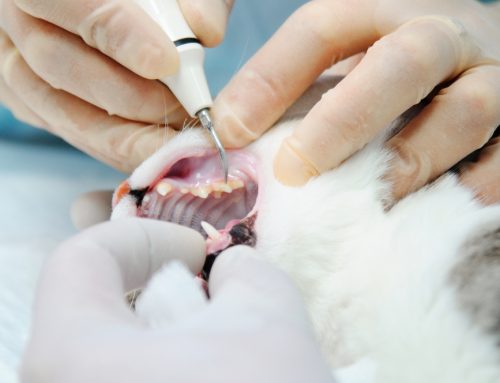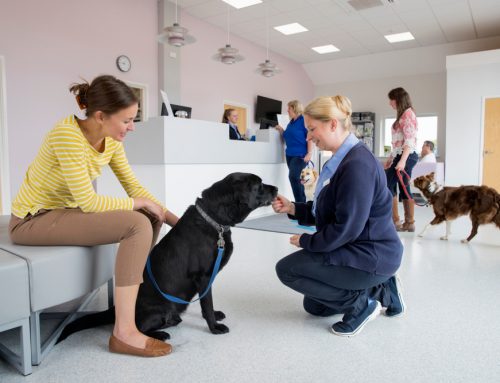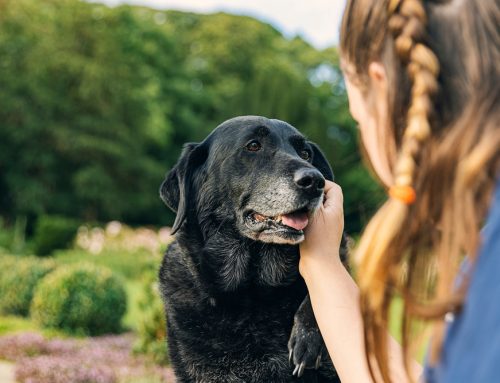As the summer temperatures rise, don’t let the odds of your pet becoming an emergency also rise. Here is a list of a list of summer tips, so you and your pet can enjoy the sun without the burn, and the heat without the risk.
#1: Love them and leave them—know when to say “No” to your pet
As pet lovers, we all want to bring our furry friends along for the ride, but summer heat can make that unsafe. Sharing experiences with our pets is wonderful, but protecting them from danger is more important. Before you go, check the following:
- The forecast — Pay attention to the temperature and the heat index, as well as the humidity, which reduces the effectiveness of your dog’s panting. If you see your cat panting, they’re feeling quite stressed; this is not a normal response to warm temperatures for them. Remember that other species, such as rabbits, guinea pigs, and other rodents, also do not pant to control their temperature, and are therefore more sensitive to the stress of being in a hot car.
- The destination — Will your pet be able to escape the heat at your destination? Can they go into the air conditioning inside?
Most importantly, know when to say “No.” You may be met with sad eyes, but your pet’s health comes first.
#2: Traveling with your pet? Know how to beat the heat
If you will be vacationing with your pet, always make a packing list for them, to ensure nothing gets left behind. Your pet should travel with:
- Water and water bowl —Also, take plenty of extra water in case of emergency or traffic delays.
- Pet first aid kit — You should always have this on hand for minor issues, such as scrapes, bug bites, or small wounds. For major problems, such as heat-related stress or fracture, always seek emergency veterinary assistance.
- Pet information sheet — One of the best things to always have available, including in your car, is an emergency contact packet, which can be a simple, printed, basic information sheet for your pet. Ideally, the sheet should include your pet’s picture, their name, age, breed, gender, vaccine records, special needs, and emergency contacts.
- Cooling equipment — Air flow in your car’s back seat, or the rear area your pet travels, is often reduced, so consider providing a portable fan for your pet, to help cycle cool air to that part of the vehicle. You can fashion a hose system to funnel air from a vent to the rear seat, or purchase The Noggle, which is available in various lengths.
#3: “It’ll only take a minute!” Know that a minute may mean forever for your pet
Every year, children and pets die when left in parked cars. According to kidsandcars.org, a nonprofit child safety advocacy site, 80 percent of the temperature increase inside a parked car occurs in the first 10 minutes, and the temperature can climb as high as 125 degrees. This means a quick stop at a gas station or the post office can put your pet in an emergency situation. Lowering the windows does not reduce the temperature rise, so if you cannot bring your pet with you, don’t leave them unattended in the car—leave them at home.
#4: “What is wrong with my pet?” Know heatstroke signs
Heatstroke is a cruel and tragic condition that occurs when a hot pet cannot lower their internal body temperature. A sustained high body temperature leads to organ, vascular, and neurologic damage, and in extreme cases, immediate or delayed death. Every year, pets left outside without shade and water, or in parked cars, fall victim to heatstroke. This tragedy is preventable when you act as your pet’s advocate, and make wise choices about activity and travel. Know the warning signs of heatstroke:
- Excessive panting
- Drooling
- Red gums
- Vomiting or diarrhea
- Lack of coordination
- Mental dullness
- Weakness or collapse
- Seizure
#5: “Boy, the pavement is hot!” Know when to walk your pet on the grass
Asphalt, concrete, and artificial grass can absorb a lot of heat on a sunny day. Protect your pet’s paws from painful burns by checking the surface temperature with the back of your hand. If you cannot comfortably hold your hand down for five to seven seconds, the surface is too hot for your pet’s paws. Walk your dog in the grass or exercise during the cooler parts of day.
#6: Stay cool and carry on. Know the time to exercise your pet
During the summer, rescheduling physical activity and exercise to the early morning or late evening hours will benefit both you and your pet. Exercising at midday or on your lunch break may be convenient, but your pet’s risk of heat-related injuries, such as heatstroke, exhaustion, or paw pad burns, is exponentially increased. Reduce activity intensity to match the temperature—for example, play fetch on a flat lawn rather than throwing a ball uphill, take a training class at an indoor facility instead of the park, or walk slowly rather than jog.
#7: Water hog? Know when your dog has been in the water too long

A hot day spent on or near the water feels so much better, but before you head to the water’s edge with your dog, take a few precautions:
- Dogs who drink a lot of water while swimming can develop water toxicity. This condition disrupts the dog’s electrolyte balance, and causes nausea, vomiting, and lethargy. In severe cases, seizures and coma can require hospitalization. If your dog is drinking excessively, end the swimming session and give them a break.
- Water-loving dogs may not know their limits, and can drown from exhaustion. Be proactive, not reactive—ensure your dog takes frequent breaks.
- Be aware of an undertow or strong current.
- A properly fitting life jacket can save your dog’s life.
Do you have specific questions about pet heat safety? Contact the team at Bolton Veterinary Hospital. We want you and your pet to enjoy a safe summer.







Leave A Comment